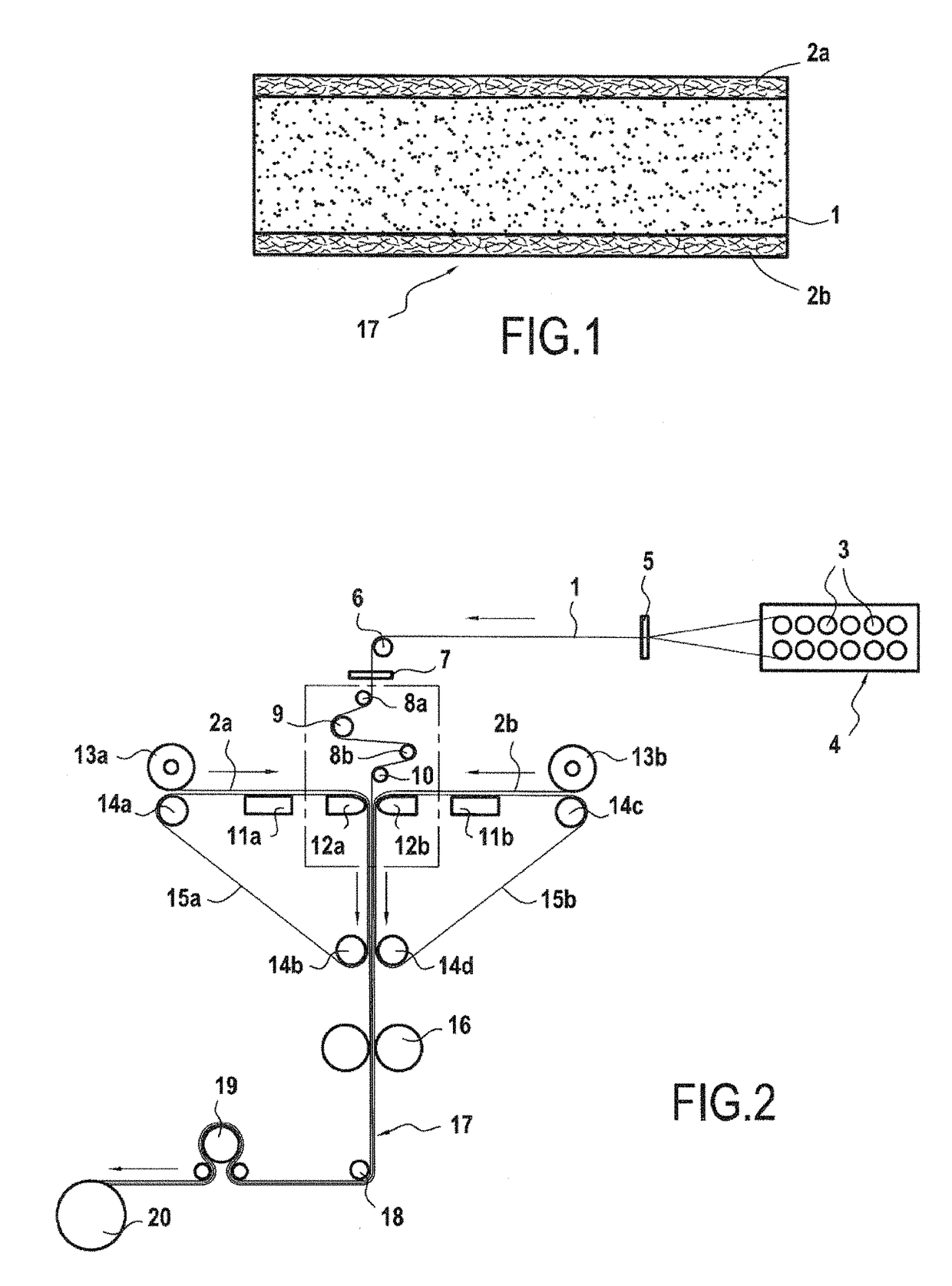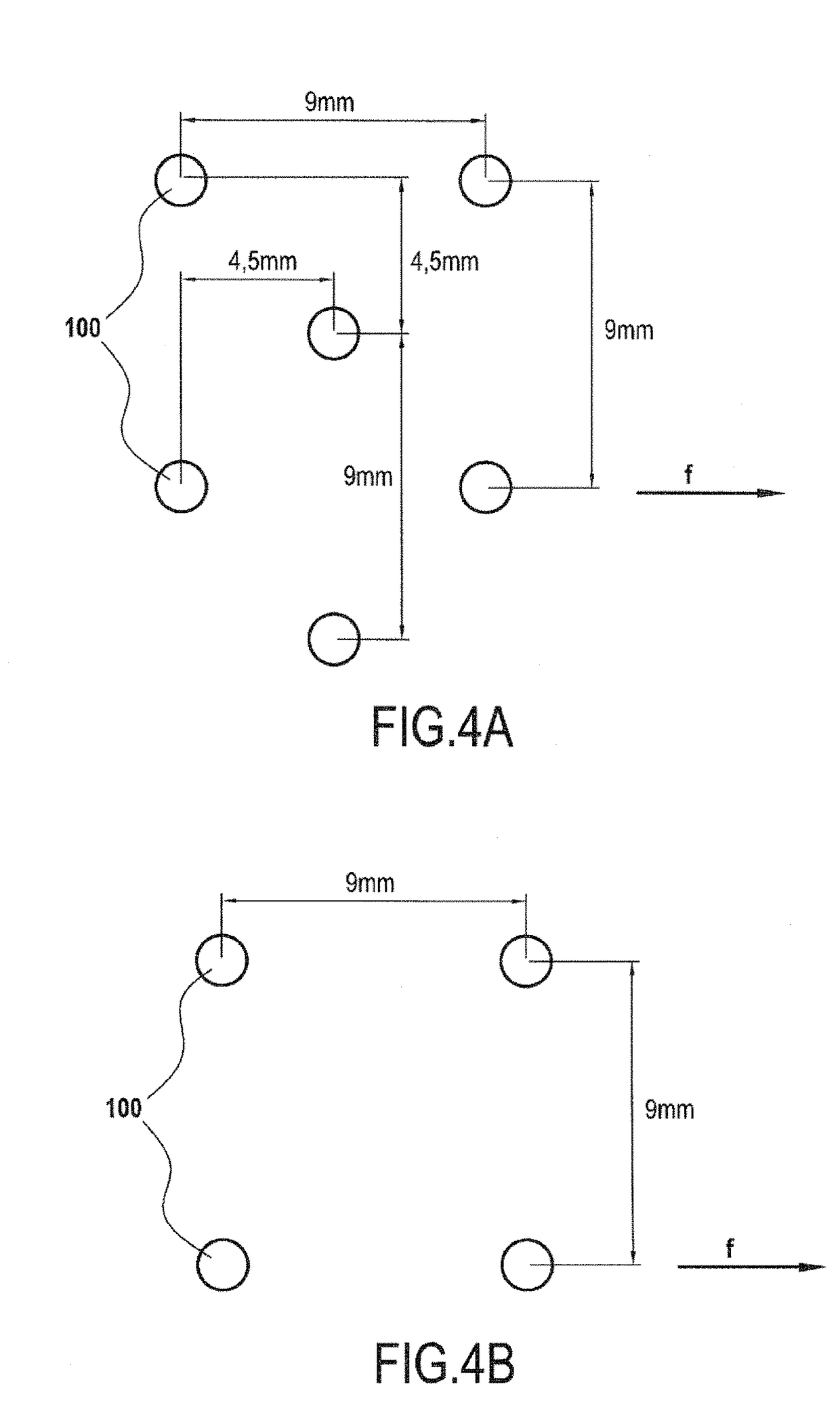Fibrous preforms for use in making composite parts
a technology of fibrous and composite parts, applied in the field of reinforcement, can solve the problems of poor impact resistance of fabricated composite parts, difficult to obtain fiber volume fractions greater than 70% for composite parts, and inability to obtain satisfactory vfr, so as to improve the low-speed impact resistance of obtained composite parts and facilitate parts fabrication
- Summary
- Abstract
- Description
- Claims
- Application Information
AI Technical Summary
Benefits of technology
Problems solved by technology
Method used
Image
Examples
example 23
[0140] 4 plies according to example 8—perforation head ø0.8, a photograph of which is shown in FIG. 13
[0141]Example 24: 4 plies according to example 8—perforation head ø0.8, in alternating fashion, a photograph of which is shown in FIG. 14
example 25
[0142] 1 ply according to example 8—perforation head ø1.6, a photograph of which is shown in FIG. 15
[0143]Example 26: 4 plies according to example 8 welded (without perforation)—The welding uses a head with a diameter of 8 mm heated to a temperature of 200° C., identical to the perforation heads but without the needle. The welds are placed according to FIG. 4a, but spaced by 50 mm. The welds are performed, with a pressure of 30 kPa.
[0144]And as a comparison for the transverse permeability:
[0145]Twill fabric 2. / 2—ref Hexed 48302
[0146]Quasi-isotropic multiaxial 4×194 g / m2 HR stitched with thread 76 dtex−5 mm×5 mm−chain stitch.
[0147]7. 2 Transverse Permeability Measurements
[0148]The machine and measurement method are described in the thesis entitled “Problems in the measurement of transverse permeability of fibrous preforms for the fabrication of composite structures,” by Romain Nunez, defended at the Ecole Nationale Supérieure des Mines de Saint Etienne, 16 Oct. 2009, The FVR variatio...
PUM
| Property | Measurement | Unit |
|---|---|---|
| thickness | aaaaa | aaaaa |
| thickness | aaaaa | aaaaa |
| diameters | aaaaa | aaaaa |
Abstract
Description
Claims
Application Information
 Login to View More
Login to View More - R&D
- Intellectual Property
- Life Sciences
- Materials
- Tech Scout
- Unparalleled Data Quality
- Higher Quality Content
- 60% Fewer Hallucinations
Browse by: Latest US Patents, China's latest patents, Technical Efficacy Thesaurus, Application Domain, Technology Topic, Popular Technical Reports.
© 2025 PatSnap. All rights reserved.Legal|Privacy policy|Modern Slavery Act Transparency Statement|Sitemap|About US| Contact US: help@patsnap.com



